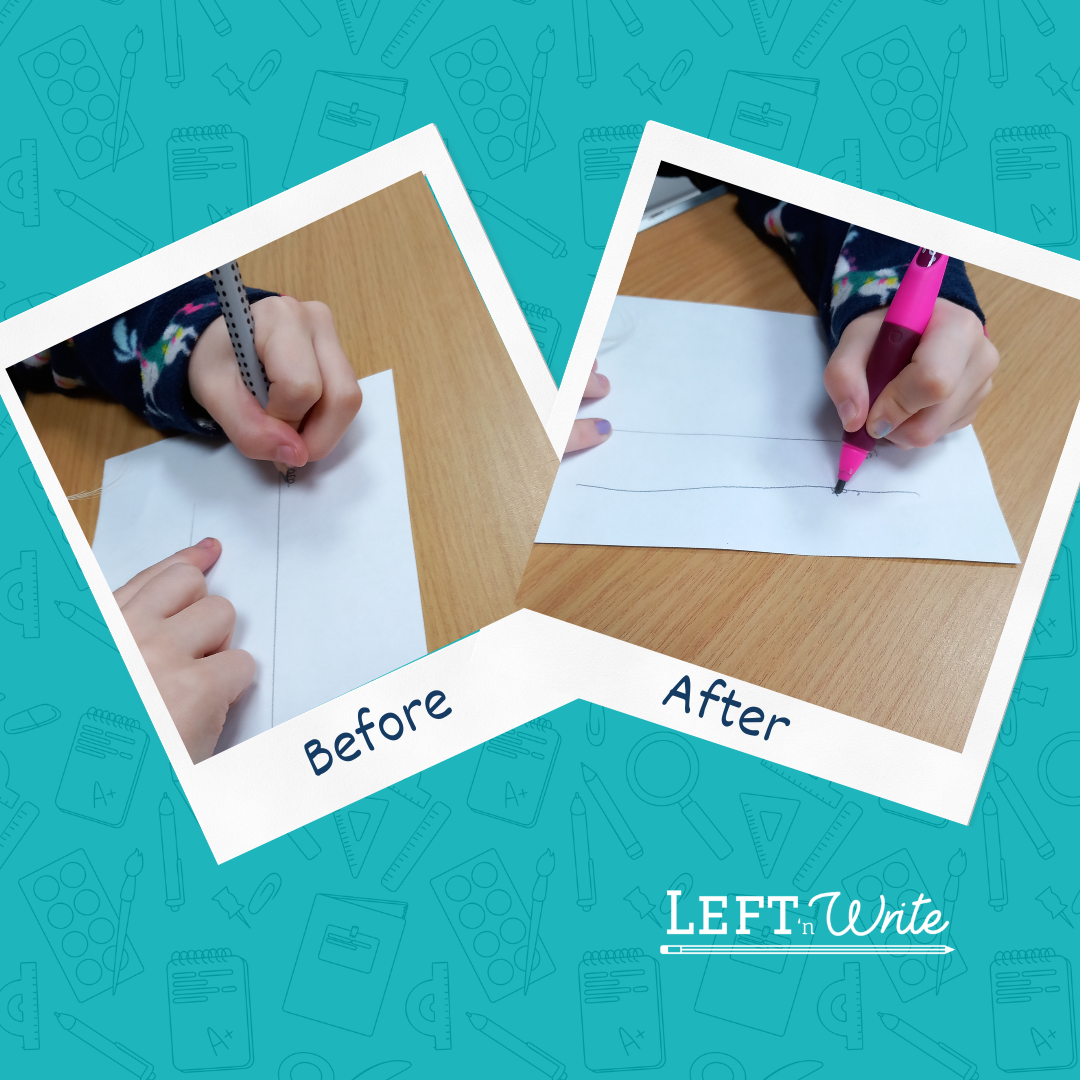Left-handers just do a mirror image of right-handers. don’t they? It’s all very simple and straightforward. Well actually NO! It really isn’t as simple as writing the opposite way round to a right-hander.
I suggest that you try writing yourself: do it slowly to appreciate the points below and see what it’s like from both the right and left-hander’s perspective.
A right-handed person draws their hand to the right as they write, moving away from their writing as they do it. This means they can see what they have written as they write, won’t cover over what they have written, won’t get smudged or messy writing, can easily make a finger space before they start a new word and have no problem copying text to the left of them. So plenty of benefits!
Now consider it from the left-handers perspective. The left-hander has none of the benefits which the right-hander automatically has. The left-hander starts at a natural disadvantage as their writing hand will start from behind the writing. Without suitable guidance to achieve a good technique, the left-hander will cover their writing which leads to the following issues:
- Smudging – Left-hander in the past often used the “Hook” style of writing to overcome this issue but it is not a natural way to write and can cause pain to the wrist
- Messy hands if using pen (easily visible issue if using whiteboards!)
- Can’t see what they have written without lifting their hand away
- Difficulty making a finger space
- Difficulty copying text
Imagine the impact on the child facing these issues every time they put pencil or pen to paper! Due to lack of awareness and training, many educators are unable to react appropriately to help the left-handed child. Often teachers and parents look at “WHAT” has been written and not the “HOW” it has been written. Particularly in the Early Years, when children are using pencil, such issues are not considered important as they are not always visible.
However, encouraging good habits at an early age can minimize problems later and reduce/remove time and cost needed for remedial work.
There are 4 critical components for the left-hander to achieve a good technique:
- Pencil Grasp – the dynamic tripod grip is a really good one
- Where to hold writing implement in the hand- in the “v” between thumb and forefinger
- Angle of wrist – straight line following line of arm
- Angle of paper – edge of the paper needs to be parallel to the arm
The photograph shows a common grip pencil grasp from left-handed child. If using a pen, she would smudge her writing, amongst the other attendant issues of finger spacing, copying, inflexibility in letter formation!
Changing this technique may take less than 20 minutes in some circumstances! The child now has a good dynamic tripod grip using the STABILO left-handed Easy Ergo pencil , no smudging even if using a pen, and she can see what she has written! Sorted for the rest of her life!
A good age to address these issues is about age 7 where the child can understand what they are being told and can put it into action too. However, encouraging good
habits earlier will minimize problems later.
For downloadable training, visit www.mycpdgroup.com
For appropriate resources, visit www.leftshoponline.co.uk

